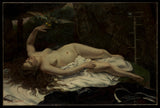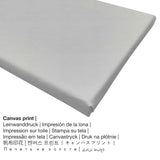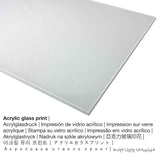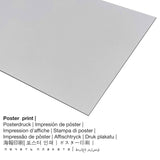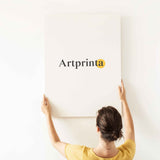Gustave Courbet, 1866 - Nwanyị nwere Parrot - mbipụta nka mara mma
Ụtụ gụnyere. Mbupu gbakọrọ na ndenye ọpụpụ.
Ihe omuma ihe omuma
a nkà nke oge a artpiece with the title "Woman with a Parrot" was created by the male French onye na-ese ihe Gustave Courbet kwuru. The original of the artpiece has the following size - 51 x 77 in (129,5 x 195,6 cm). Mmanụ na kwaaji was used by the French painter as the medium of the work of art. Besides, the work of art is in the the Ụlọ ihe ngosi nka nke Metropolitan digital collection, which is one of the world's largest and finest art museums, which includes more than two million works of art spanning five thousand years of world culture, from prehistory to the present and from every part of the globe.. With courtesy of The Metropolitan Museum of Art, New York, H. O. Havemeyer Collection, Bequest of Mrs. H. O. Havemeyer, 1929 (ọha na eze). Moreover, the artpiece has the creditline: H. O. Havemeyer Collection, Bequest of Mrs. H. O. Havemeyer, 1929. What is more, the alignment of the digital reproduction is in odida obodo format na nwere akụkụ ruru nke 3: 2, nke pụtara na ogologo bụ 50% ogologo karịa obosara. Gustave Courbet was a male painter, sculptor, communard, whose art style can be classified as Realism. The French artist was born in 1819 in Ornans, Bourgogne-Franche-Comte, France and passed away at the age of 58 N'afọ 1877 na La Tour-de-Peilz, Vaud, Switzerland.
Nhọrọ akụrụngwa ngwaahịa gị
The product dropdown menu ofers you the possibility to choose your individual size and material. Thus, we allow you to choose among the following options:
- Mbipụta aluminom (aluminium dibbond): An Aluminium Dibond print is a print material with an outstanding depth. A non-reflective surface make a modern look.
- Mpempe akwụkwọ ederede (akwa akwa akwa): A poster is a printed canvas paper with a nice finish on the surface. Please bear in mind, that depending on the size of the poster we add a white margin of approximately 2 - 6cm round about the painting in order to facilitate the framing with a custom frame.
- Mbipụta kwaaji: The canvas direct print is a printed cotton canvas stretched on a wood frame. Canvas prints are relatively low in weight, meaning that it is quite simple to hang your Canvas print without extra wall-mounts. A canvas print is suitable for any kind of wall.
- Mbipụta iko acrylic (nke nwere ezigbo mkpuchi iko): An print on acrylic glass, which is sometimes referred to as a print on plexiglass, makes your favorite artwork into beautiful home decoration. The work of art is being printed with the help of state-of-the-art UV direct print machines. The great advantage of an acrylic glass fine art copy is that sharp contrasts and smaller color details will be more visible because of the fine gradation. The acrylic glass protects your selected art replica against sunlight and heat for up to 6 decades.
Important information: We try the best we can to depict our products as accurate as possible and to display them visually in our shop. Nevertheless, the colors of the printed materials and the imprint can differ marginally from the representation on the monitor. Depending on the settings of your screen and the quality of the surface, not all color pigments are printed as realistically as the digital version depicted here. Because the art prints are processed and printed manually, there might also be minor deviations in the motif's exact position and the size.
Banyere ngwaahịa a
| Bipụta ụdị ngwaahịa: | ezi nka mmeputakwa |
| Usoro mmeputakwa: | mmeputakwa n'ụdị dijitalụ |
| Usoro nhazi: | Mbipụta UV ozugbo (mbipụta dijitalụ) |
| Mmalite ngwaahịa: | emepụtara na Germany |
| Stockdị ngwaahịa: | mmepụta ihe na-achọ |
| Eji ngwaahịa emebere: | ime ụlọ, ụlọ mmepụta nka nka |
| Nhazi nke ihe nka: | usoro odida obodo |
| Oke akụkụ onyonyo: | 3: 2 |
| Nkọwa nha onyonyo: | ogologo bụ 50% ogologo karịa obosara |
| Akwa ngwaahịa dị: | mbipụta akwụkwọ mmado (akwụkwọ kwaaji), mbipụta kanvas, mbipụta enyo acrylic (nwere ezigbo mkpuchi iko), mbipụta ọla (aluminium dibbond) |
| Canvas dị n'elu ihe nrịbama (mbipụta kanvas) nha dị iche iche: | 30x20cm - 12x8", 60x40cm - 24x16", 90x60cm - 35x24", 120x80cm - 47x31", 150x100cm - 59x39" |
| Mbipụta iko acrylic (nwere ezigbo mkpuchi iko) dị iche iche: | 30x20cm - 12x8", 60x40cm - 24x16", 90x60cm - 35x24", 120x80cm - 47x31", 150x100cm - 59x39" |
| Mbipụta akwụkwọ mmado (akwụkwọ kwaaji): | 60x40cm - 24x16", 90x60cm - 35x24", 120x80cm - 47x31" |
| Nha aluminom dibond (ihe aluminom) nha: | 30x20cm - 12x8", 60x40cm - 24x16", 90x60cm - 35x24", 120x80cm - 47x31" |
| Nhazi mmeputa nka nka: | adịghị |
Ozi ndabere ihe nka
| Aha ọrụ nka: | "Woman with a Parrot" |
| Nhazi nke ọrụ nka: | sere |
| Otu izugbe: | nkà nke oge a |
| Time: | 19th narị afọ |
| Emepụtara na: | 1866 |
| Afọ nka: | ihe karịrị afọ 150 |
| Usoro nka izizi: | mmanụ na kwaaji |
| Akụkụ izizi nka: | 51 x 77 n'ime (129,5 x 195,6 cm) |
| Ụlọ ihe ngosi nka: | Museumlọ ihe ngosi nka nke Obodo |
| Ebe ngosi nka: | New York City, New York, Njikota Obodo Amerika |
| Weebụsaịtị nke ihe ngosi nka: | Museumlọ ihe ngosi nka nke Obodo |
| Akwụkwọ ikike nka: | ngalaba ọha |
| Site n'aka: | Ụlọ ihe ngosi nka nke Metropolitan, New York, HO Havemeyer mkpokọta, Arịrịọ nke Oriakụ HO Havemeyer, 1929 |
| Ebe E Si Nweta: | Mkpokọta HO Havemeyer, Arịrịọ nke Oriakụ HO Havemeyer, 1929 |
Tebụl nchịkọta ihe nkiri
| Aha onye nka: | Gustave Courbet kwuru |
| Aha ndị ọzọ: | Gust. Courbet, Courbet, courbet g., courbert, Courbet Jean Desire Gustave, courbet gustave, Courbet Jean-Desire-Gustave, G. Courbet, קורבה גוסטב, courbet gustav, Courbet Gustave, gustav courbet, Kurbe Gi︠u︡stav, Gustave Courbet, Courbet G. |
| okike onye nka: | nwoke |
| Obodo onye nka: | French |
| Ọrụ onye na-ese ihe: | onye na-akpụ ihe, onye na-ese ihe, communard |
| Obodo obibi: | France |
| Nhazi nke onye nka: | omenkà nke oge a |
| Ụdị nka: | Ihe ngosi |
| Afọ ọnwụ: | 58 afọ |
| Amụrụ n'afọ: | 1819 |
| Ebe omuma: | Ornans, Bourgogne-Franche-Comte, France |
| Afọ nwụrụ: | 1877 |
| Nwụrụ na (ebe): | La Tour-de-Peilz, Vaud, Switzerland |
© nwebiisinka | www.artprinta.com (Artprinta)
Nkọwapụta nka sitere na webụsaịtị Metropolitan Museum of Art (© Nwebiisinka - The Metropolitan Museum of Art - Museumlọ ihe ngosi nka nke Obodo)
When this painting was shown in the Salon of 1866, critics censured Courbet's "lack of taste" as well as his model's "ungainly" pose and "disheveled hair." Yet the provocative picture found favor with a younger generation of artists who shared Courbet’s disregard for academic standards. Manet began his version of the subject (89.21.3) the same year; and Cézanne apparently carried a small photograph of the present work in his wallet.

